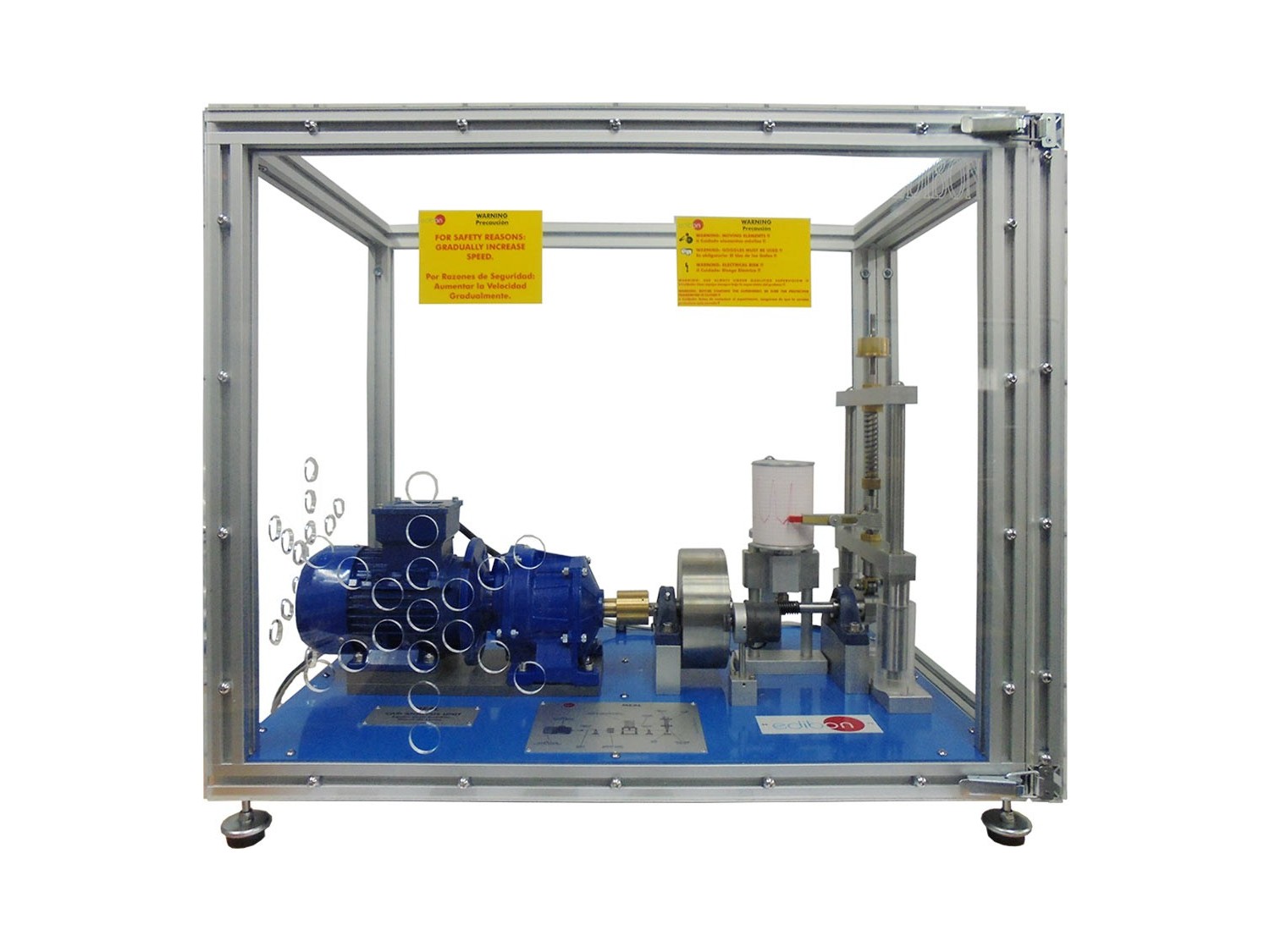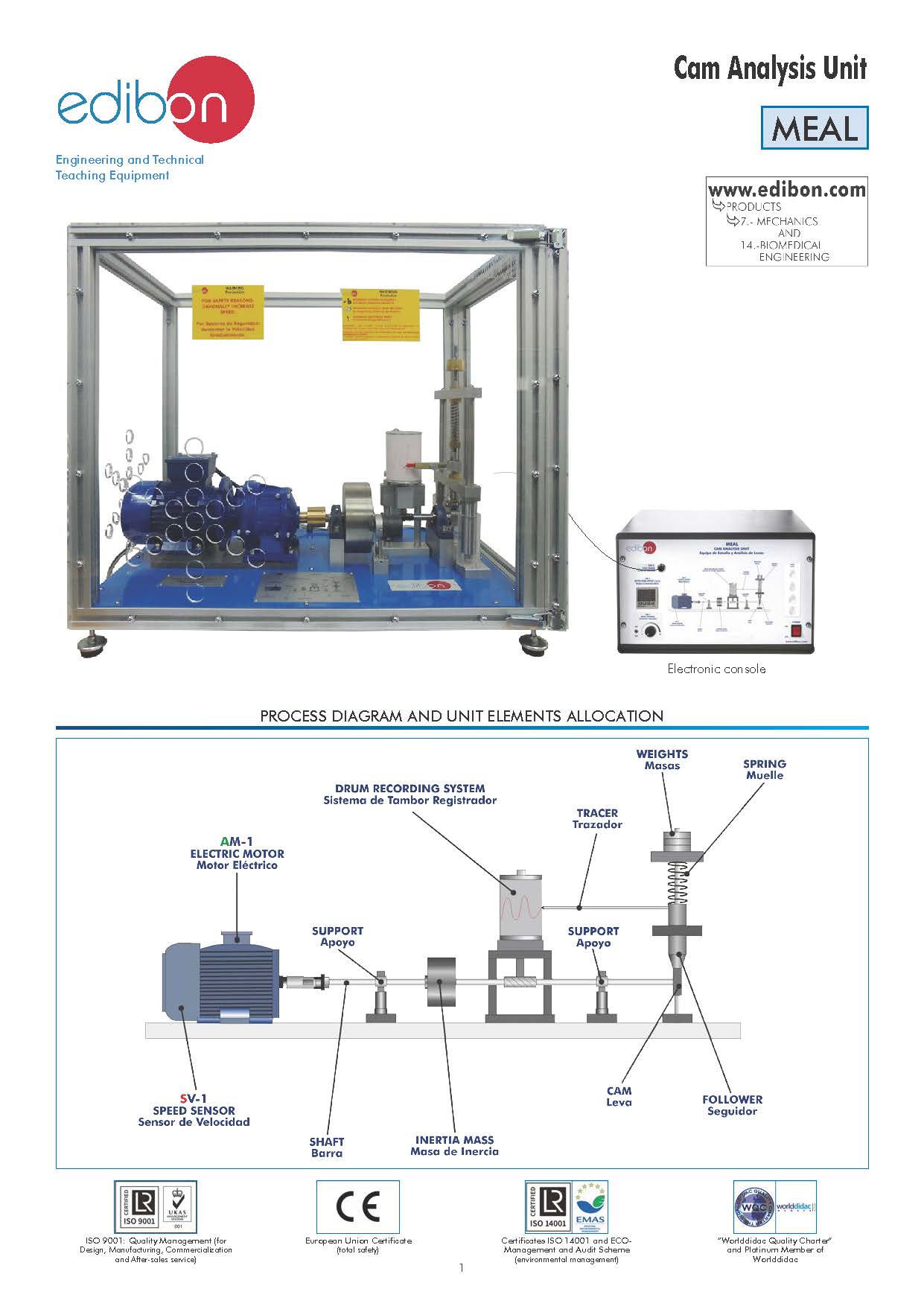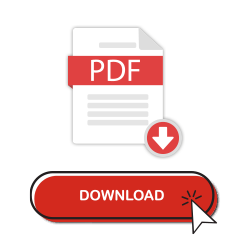
Cam Analysis Unit
INTRODUCTION
A cam is a mechanical element that rotates or moves forwards and backwards to create a set motion in contact with an element known as follower.
In fact, a cam can be employed to obtain an unusual or irregular motion that would be difficult to obtain with any other coupling.
The rising and falling speed of the follower can be controlled in function of the profile of the cam. When the cam completes one turn, the follower performs a series of motions that consists of rising, stopping and returning.
The Cam Analysis Unit, “MEAL”, allows the students to observe and study the dynamic behavior of the cam mechanisms under several operation conditions.
EXERCISES AND PRACTICAL POSSIBILITIES
- Observation of the effect of the cam profile on the dynamics of the cam.
- Comparison of different cam designs.
- Theoretical study of the displacement, velocity and acceleration profiles of different types of cams and followers.
- Experimental study of the displacement profiles of different types of cams and followers.
- Comparison of the theoretical and experimental displacement curve of the cams with different types of springs, weights and rates.
- Study of the influence of a moving mass.
- Study of the influence of the spring rigidity.
- Study of the influence of the rotation axis of the cam.
- Experimental study of the limit velocity.
Additional practical possibilities: - Study of the inertia of the follower and compression rate of the spring.
- Plotting of lift curves for non-matching tracer.
- Plotting of lift curve for skipping tracer.



